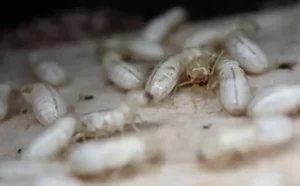
New research from the Riverside branch of the University of California (UC Riverside) finds that a chemical can prevent drywood termites (Kalotermitidae) from growing new exoskeletons, leading to better control.
The chemical, bistrifluron, and its ability to kill about 95 percent of a termite colony without off-target effects on mammals, are documented in a paper published in the Journal of Economic Entomology.
“This chemical is more environmentally friendly than ones traditionally used for drywood termite infestations,” said Nicholas Poulos, corresponding author of the paper and a doctoral student in UCR’s Department of Entomology. “It’s specific to insects and can’t harm humans.”
Termites have exoskeletons on the outside that protect them from the elements. The main component of these external skeletons is chitin, which provides mechanical strength for insect exoskeletons, making them suitable as armor and sites for muscle attachment.
As termites are getting ready to molt, something they must do in order to grow, they also produce chitin to create the new exoskeleton. Bistrifluron, the study found, prevents them from doing so.
“Once the termites reach a certain stage, they have to molt. They cannot avoid that,” said Dr. Dong-Hwan Choe, UCR entomology professor and senior paper author. “With a lethal dose of this chemical, they’ll try to shed their old exoskeleton but won’t have a new one ready to protect them.”
The researchers observed that bistrifluron initially slows the termites down, reducing their feeding activity. Eventually, it prevents them from molting, and they die. This is one of the first studies, Dr. Choe said, that looks at the impact of chitin-inhibiting chemicals on drywood termites.
“It’s been successfully used on subterranean termites, which are also important structural pests,” Dr. Choe said. However, he pointed out that western drywood termites (Incisitermes minor) are also important, “especially in California.”
As the termites eat the treated wood, they also spread the chemical to other members of the colony. Full collapse happens in about two months, which is slower than other methods but carries certain advantages in addition to lower toxicity.
“We believe this method of spot treatment can kill a larger colony and spread more easily than current termite control methods,” Dr. Choe added. “You don’t have to apply too much to get a very good result. The chitin synthesis inhibitors show promise as localized treatment for drywood termites.”
Moving forward, the researchers are looking into ways to make bistrifluron easier to apply to wood. For the research described in the paper, the chemical was dissolved in acetone and applied to wood. However, in real life, this solvent isn’t desirable because it is flammable and has a strong odor.
“We are working to make it more feasible for practical application in real life scenarios,” Poulos said.
Leave A Comment